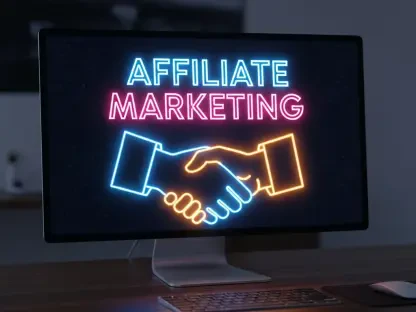Listen to the Article
When digital marketers discuss declining performance, the conversation usually centers on algorithms: a change to Google’s SERP layout, an update to Meta’s ad engine, or Apple’s latest privacy setting. But a more subtle, systemic challenge is reshaping the digital marketing landscape—one that is less dramatic yet considerably more damaging.
It’s the erosion of digital credibility itself.
In today’s hyper-automated environment, the problem is not just misinformation, but misrepresentation. AI-generated personas influence segmentation, form submissions come from bots, and performance metrics increasingly reflect machine behavior rather than genuine human interest. Campaigns are optimized based on signals that may be technically valid, but practically hollow.
This article explores how automation, bias, and unchecked AI use are quietly breaking the trust loop in B2B marketing—and what forward-looking teams must do to rebuild it.
The Cost of Automation Without Authenticity
Over the past decade, digital marketing teams have rapidly adopted automation to meet growing demand and increasingly complex buyer journeys. As a result, the average marketing stack now spans a range of specialized platforms: CRM, MAP, CDP, ABM, behavioral tracking, AI-powered content generation, attribution modeling, and lead scoring—each offering targeted utility but minimal integration.
What began as a solution to streamline workflows has evolved into a system of overload. B2B marketers today are expected to:
Deploy dozens of personalized campaigns across geographies, personas, and buying stages.
Optimize for engagement using data collected from disparate platforms.
Deliver attribution models to support revenue influence reporting.
Respond to sales feedback while simultaneously protecting data compliance.
Meanwhile, the quality of the underlying data is declining. In such a landscape, signals become distorted. What appears to be engagement may be automated traffic. What appears to be buyer intent may be behavioral mimicry, and what appears to be optimization may be feedback loops powered by flawed assumptions.
When Noise Becomes Risk
Synthetic signals rarely trigger immediate alarms. They accumulate slowly, but their impact compounds. Campaign performance is misread, audiences are over-segmented, and content strategy pivots toward topics that appeal to algorithms rather than customers. These issues are often diagnosed as tactical failures when they are, in fact, structural ones.
Marketing teams begin to experience operational fatigue. Content teams produce increasing volumes of material to chase declining engagement. Analysts spend time rationalizing metrics that don’t align with sales outcomes. And leadership receives dashboards that present directional trends but lack interpretive reliability.
Over time, the result is a weakening of the trust loop that underpins marketing effectiveness. Sales confidence in marketing data erodes, audience trust in branded content declines, and internal teams begin to question the relevance of the insights that shape their decisions.
Some of the most damaging marketing breakdowns in recent years have had one thing in common: the signals were there, but they weren’t trustworthy. The insights looked valid, the leads looked interested—but the substance was synthetic.
Why More Tools Won’t Fix the Trust Problem
When dashboards lie, most marketing teams double down on tech. They add identity resolution platforms. Enrich lead profiles. Install anomaly detection. Shift attribution windows. Plug in AI to write even more “relevant” nurture sequences.
But without a strategy for verification and coordination, you’re just dressing up chaos in “fancier” dashboards.
Consider lead qualification as an example. A marketing automation platform may flag a lead based on high-intent behaviors: multiple site visits, a gated content download, and email engagement. However, if those interactions stem from an AI crawler or a spambot—common in today’s environment—the signal is misleading. Sales receives the lead, qualifies it, and the cycle repeats.
In a landscape full of AI-generated audiences and inflated metrics, context is everything. Without it, marketers risk optimizing for engagement that isn’t real, while real buyers tune out.
Rebuilding Marketing Credibility as a Human-Centric Strategy
To recover trust, marketers must reframe their operating models—not just in terms of tool hygiene, but around reducing synthetic noise and increasing verified context. This starts with orchestration.
Beyond automating everything, the goal is to re-anchor campaigns in reality, so humans can make smarter decisions without being misled by artificial signals. That means:
Normalizing data across CRMs, analytics tools, and third-party feeds.
Embedding human validation into lead scoring workflows.
Mapping engagement journeys to real-world outcomes, not inferred ones.
Creating shared visibility between marketing, sales, and product.
Delivering verified performance narratives to leadership, not just vanity dashboards.
In this framework, marketing becomes a coordinated system. With generative AI, intent data, and predictive orchestration now maturing, the opportunity to translate noise into real signals is finally here.
The marketer’s role shifts from producer to verifier, from pushing impressions to surfacing truth. From asking, “How many people clicked?” to asking, “Which of these are actually people—and do they trust us?”
A Blueprint for Restoring Credibility in the Funnel
Now for the practical part: If the real crisis is the death of digital credibility, here’s how to restore it—step by step.
1. Audit Your Signal Chain
Start with your reporting dashboards. For every key metric, ask: what is this number actually measuring, and what assumptions is it built on? If you can’t verify the origin or trust the source, flag it.
2. Filter Engagement for Intent, Not Activity
Clicks, downloads, and form fills can be automated. But real human intent shows up in patterns: time on page, repeat visits, qualitative feedback, live interactions. Prioritize those signals over superficial volume.
3. Shrink Your Synthetic Personas
Don’t over-segment based on weak data. Limit personas to those you can validate with consistent, real-world behavior. If your audience insights came from GPT or scraped social data, test them before you build content on top of them.
4. Embed Human Proof Into Content
Don’t just write “value-driven” blog posts. Show receipts. Use real quotes, customer examples, and behind-the-scenes narratives. When using AI tools, include authorship transparency and content provenance.
5. Validate Leads Early—and Continuously
Add verification steps to your funnel. This could mean email/domain authentication, conversational lead qualification, or a check-in workflow post-conversion. Every touchpoint is a chance to confirm identity.
6. Train for Integrity, Not Just Output
Your team’s KPIs shape their decisions. Reward quality of insight, not just quantity of content or leads. Encourage skepticism. Build a culture where truth beats speed.
Your Dashboard Can Tell the Whole Story
Many organizations continue to operate under the assumption that if KPIs are being met and dashboards show upward trends, all is well. But in an environment where AI-driven signals and synthetic behavior are commonplace, traditional performance indicators can be dangerously misleading.
Look beyond the numbers to assess whether those figures reflect genuine human interest or whether they’re the byproduct of automation loops and signal distortion. When the data becomes unreliable, strategy becomes reactive, and teams lose confidence in the very systems designed to guide them.
Remember that…
Rebuilding marketing credibility starts with protecting your most valuable asset: audience trust. That means coordinating for clarity, not just creating for reach.
There will be fewer personas, fewer pages, and fewer campaigns. But they’ll be more grounded, more verified, and more resonant. B2B buyers won’t just see your content—they’ll believe it.
This is your moment to lead—not because AI is flashy or KPIs are lagging, but because your audience is skeptical. And if they stop believing you, the funnel doesn’t stall. It disappears.
The real threat to digital marketing was never the algorithm, but believing that performance meant truth. But with the right strategy, you can bring the truth back.









